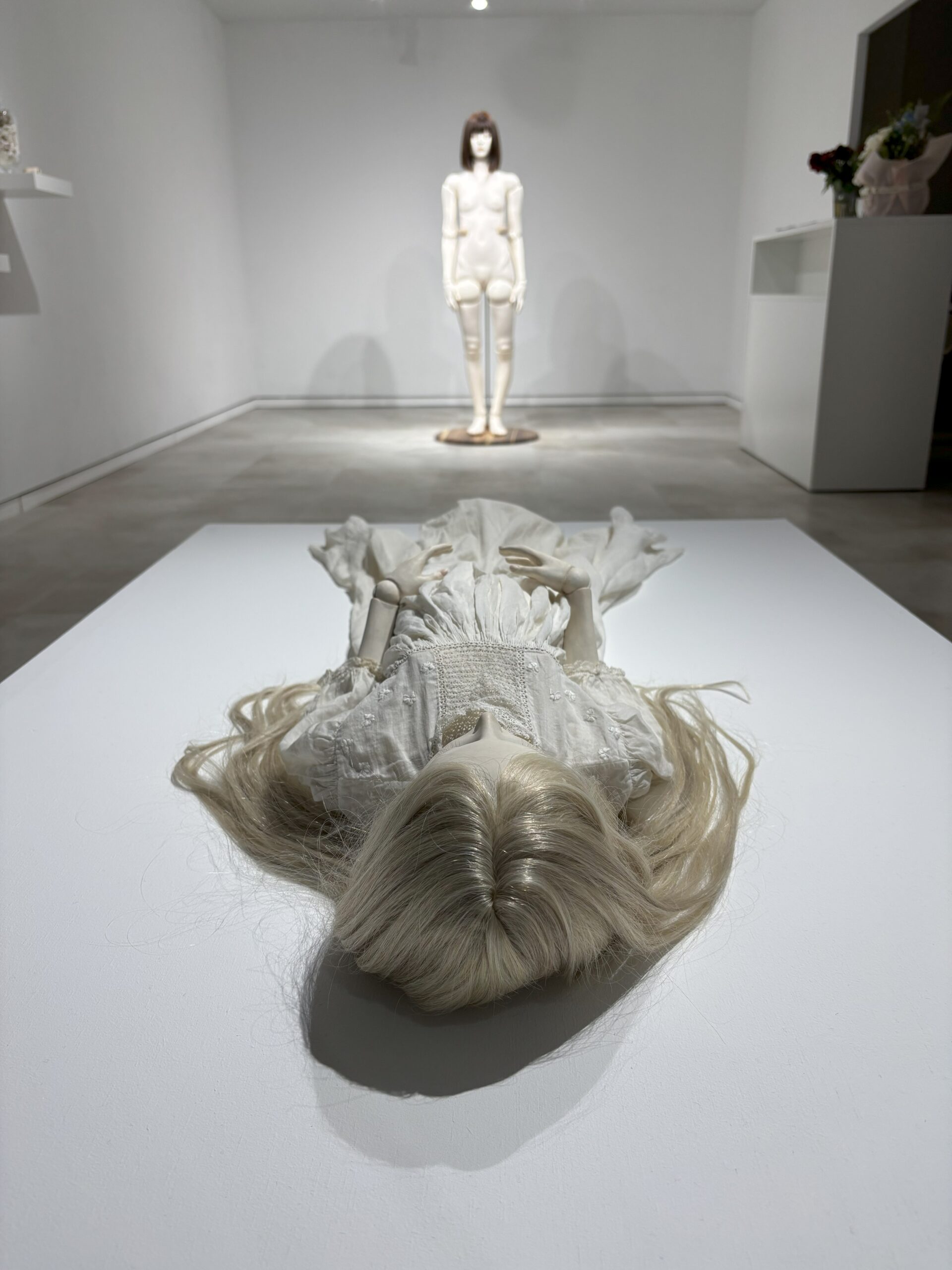A Revolutionary Voice in Contemporary Art and Body Representation
Introduction: At the Crossroads of Tradition and Innovation
In the landscape of contemporary Japanese art, few artists have managed to bridge the gap between traditional sculptural techniques and cutting-edge conceptual art as successfully as Sato Raimu. Her groundbreaking work with ball-jointed dolls transcends the boundaries of craft, sculpture, and performance art, establishing her as a significant voice in the global contemporary art discourse. Through her meticulous approach to anatomical precision and her profound engagement with philosophical questions of existence, identity, and corporeality, Sato has created a unique artistic language that speaks to universal human experiences while remaining deeply rooted in Japanese aesthetic traditions.
Sato’s practice emerges from a sophisticated understanding of both Western art historical precedents and Japanese subcultural aesthetics. Her work demonstrates a rare ability to synthesize influences from 20th-century Surrealism, particularly the fragmented bodies of Hans Bellmer, with contemporary figure culture and traditional Japanese craftsmanship. This synthesis results in sculptures that are simultaneously familiar and uncanny, beautiful and disturbing, traditional and revolutionary.
Academic Excellence and Artistic Foundation
Sato Raimu’s artistic journey began at Tokyo Zokei University, where her graduation project immediately distinguished her from her peers. Her thesis work, “Geppaku no Shiro” (Moonwhite Castle), caught the attention of visiting professor Funakoshi Katsura, one of Japan’s most renowned contemporary sculptors. Funakoshi’s recognition of Sato’s talent speaks to the exceptional quality of her work even at the undergraduate level. This early validation from such a distinguished figure in Japanese contemporary sculpture established Sato’s credibility within the serious art world, setting her apart from hobbyist doll makers or commercial figure artists.
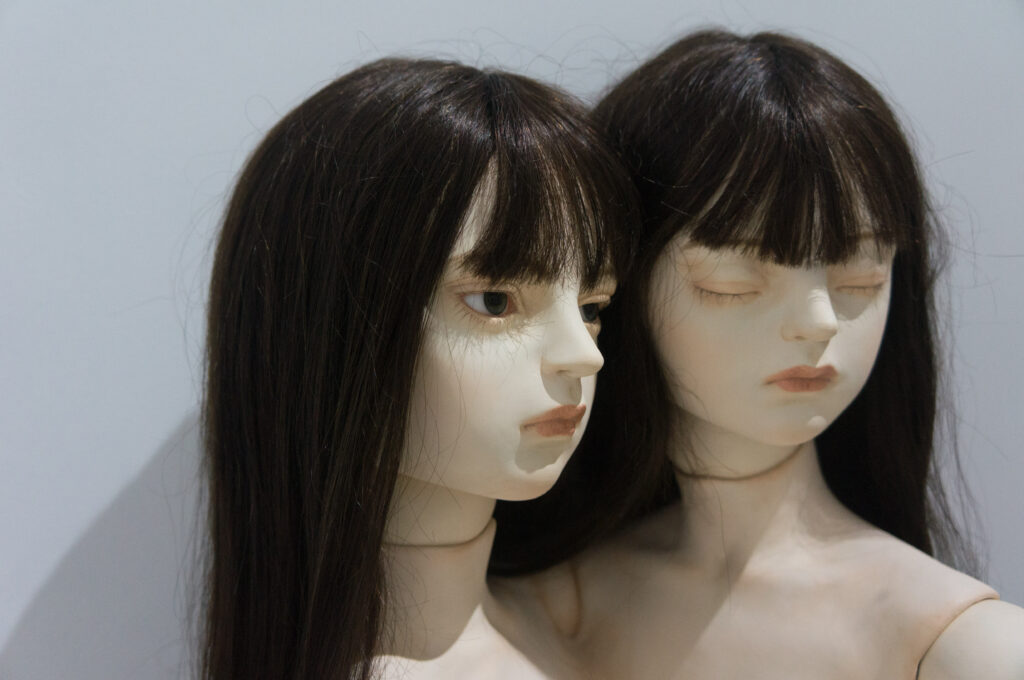
Following her undergraduate success, Sato pursued graduate studies where her commitment to artistic excellence became even more apparent. Understanding that her exploration of human form required deeper anatomical knowledge, she undertook an extraordinary step: a research residency at a medical school’s anatomy department. This dedication to understanding the human body from the inside out demonstrates the seriousness of her artistic inquiry and her commitment to technical excellence. Few contemporary artists go to such lengths to ensure the accuracy and authenticity of their representation of the human form.
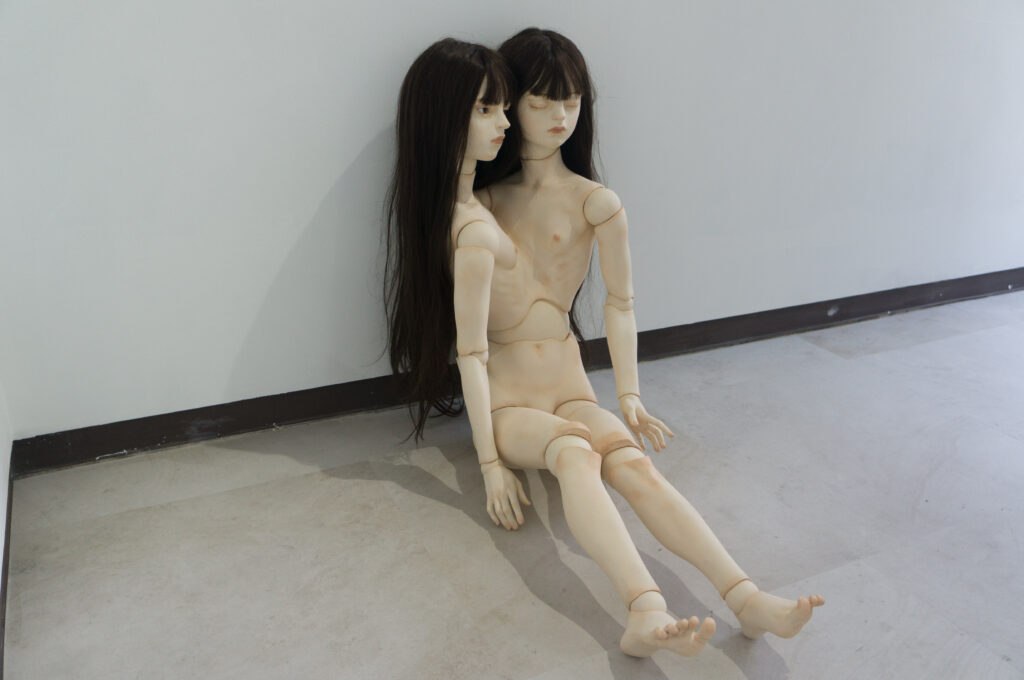
Her graduate thesis work, “Arika” (The Place of Being), further cemented her reputation as an artist of exceptional talent and intellectual depth. The work’s title alone suggests the philosophical sophistication that underlies her practice, indicating an engagement with fundamental questions of existence and presence that align her work with the most serious contemporary art investigations.
Philosophical Depth and Phenomenological Inquiry
What distinguishes Sato’s work from other contemporary sculpture is its deep engagement with phenomenological philosophy, particularly the work of Maurice Merleau-Ponty. Her sculptures embody what Merleau-Ponty described as the “duality of the body” – the simultaneous experience of being both subject and object, the one who perceives and the one who is perceived. Through her life-sized, anatomically precise self-portraits in doll form, Sato materializes this philosophical concept, creating what can be understood as three-dimensional philosophy.
The work “Arika” exemplifies this phenomenological approach. By creating a perfect replica of her own body, Sato forces viewers to confront questions about identity, presence, and the nature of selfhood. The sculpture becomes a meditation on what it means to “be” somewhere – to occupy space, to have presence, to exist as both mind and matter. This is not merely representation but transformation of philosophical inquiry into material form.

Sato Raimu Arika (Where One Belongs)(Partial view), 2025 Stone powder clay, modeling paste, oil paint, eyeshadow, and hair, 1650 × 450 × 300 mm (65 × 17 ¾ × 11 ¾ inches) © 2025 Sato Raimu. Courtesy of the artist
Her engagement with the concept of “intercorporeality” – the ways in which our bodily experiences are fundamentally interconnected with those of others – positions her work within contemporary discussions about empathy, otherness, and shared embodied experience. When viewers encounter her sculptures, they are not simply looking at art objects but engaging in a complex phenomenological experience that challenges their understanding of self and other.
Technical Innovation and Artistic Mastery
Sato’s technical skills place her among the finest contemporary sculptors working in any medium. Her ball-jointed dolls demonstrate an understanding of human anatomy that rivals that of medical illustrators, combined with an aesthetic sensibility that transforms scientific accuracy into artistic expression. The visible ball joints, rather than being merely functional elements, become powerful metaphors for the tension between the organic and the mechanical, the living and the lifeless, the human and the manufactured.
Her approach to surface treatment creates sculptures that seem to possess skin with the texture and quality of living tissue. Viewers report being surprised by the tactile quality of her work – the way light plays across the surfaces suggests warmth and life, even as the exposed joints remind us of the artificial nature of the construction. This uncanny quality, this hovering between life and death, human and object, creates a powerful emotional response that speaks to fundamental anxieties about existence, mortality, and the nature of consciousness.
The precision of her work extends beyond mere technical skill to demonstrate a profound understanding of how sculptural elements work together to create meaning. The positioning of limbs, the angle of a head, the expression of features – every element is carefully considered for its contribution to the overall conceptual framework of each piece.
Cultural Bridge-Building and Global Relevance
One of Sato’s most significant contributions to contemporary art is her ability to create a bridge between Japanese subculture and international art discourse. Her work draws on the aesthetic traditions of Japanese doll-making, the contemporary figure culture, and Lolita fashion, but transforms these elements into sculptures that speak to universal human experiences. This is not appropriation or superficial borrowing but a sophisticated cultural translation that makes Japanese aesthetic sensibilities accessible to global audiences while maintaining their essential character.
Her personal aesthetic choices, including her embrace of Lolita fashion, inform her artistic practice in ways that demonstrate the serious artistic potential of subcultural aesthetics. Rather than dismissing these cultural forms as superficial or commercial, Sato demonstrates how they can be transformed into vehicles for profound artistic expression. This approach challenges hierarchical distinctions between high and low culture, positioning her work within broader contemporary discussions about cultural value and artistic legitimacy.
Exhibition History and Critical Reception
Sato’s debut solo exhibition, “Still Life with Innocence,” at aaploit gallery in Tokyo marked a significant moment in contemporary Japanese art. The exhibition’s title brilliantly captures the essential tension in her work – the stillness of sculpture combined with the vibrancy of life, the innocence of doll-like figures with the sophistication of contemporary art discourse.
The exhibition demonstrated how Sato’s work functions in gallery spaces, transforming from private artistic exploration into public dialogue. The careful curation by director of aaploit positioned her work within the broader context of contemporary art while allowing its unique qualities to emerge. The decision to present her work in a contemporary art gallery rather than a craft or specialty doll venue was significant, marking her transition from emerging artist to established contemporary practitioner.
Critical reception of the exhibition highlighted the work’s ability to function on multiple levels simultaneously. Art critics noted the technical excellence, the conceptual sophistication, and the emotional impact of the sculptures. The work’s ability to generate serious critical discourse while remaining visually compelling and emotionally resonant demonstrates Sato’s success in creating art that functions both intellectually and experientially.
Artistic Lineage and Historical Context
Understanding Sato’s work requires placing it within the broader context of body representation in 20th and 21st-century art. Her exploration of fragmented and reconstructed bodies connects her to Surrealist investigations of the unconscious, particularly the work of Hans Bellmer, whose own doll sculptures explored themes of desire, violence, and the objectification of the female body. However, where Bellmer’s work often emphasized violence and sexual aggression, Sato’s approach is more meditative and philosophical, focusing on questions of existence and presence rather than exploitation and domination.
Her work also connects to the broader tradition of Japanese aesthetic philosophy, particularly concepts of mono no aware (the pathos of things) and wabi-sabi (finding beauty in imperfection and impermanence). The fragility and mortality implicit in her sculptures, their suggestion of life that is always already threatened by death, resonates with these traditional Japanese approaches to beauty and meaning.
Thematic Investigations: Death, Life, and Transformation
The thematic content of Sato’s work engages with fundamental human experiences in ways that are both intellectually sophisticated and emotionally resonant. Her exploration of twins in “Geppaku no Shiro” suggests investigations of identity, otherness, and the complex relationship between self and double. The twin motif in art history has always carried philosophical weight, from classical mythology through contemporary psychology, and Sato’s use of this imagery positions her work within this rich tradition while bringing fresh perspectives to age-old questions.
Her work “Tsuki no Mienu Yoru” (Night When the Moon Cannot Be Seen) explicitly engages with themes of death and mortality, but in ways that paradoxically affirm life’s value and fragility. This is not morbid fascination but mature artistic investigation of the conditions that give meaning to human existence. The title itself, with its poetic resonance, demonstrates Sato’s ability to integrate literary and visual sensibilities, creating works that operate on multiple aesthetic levels simultaneously.
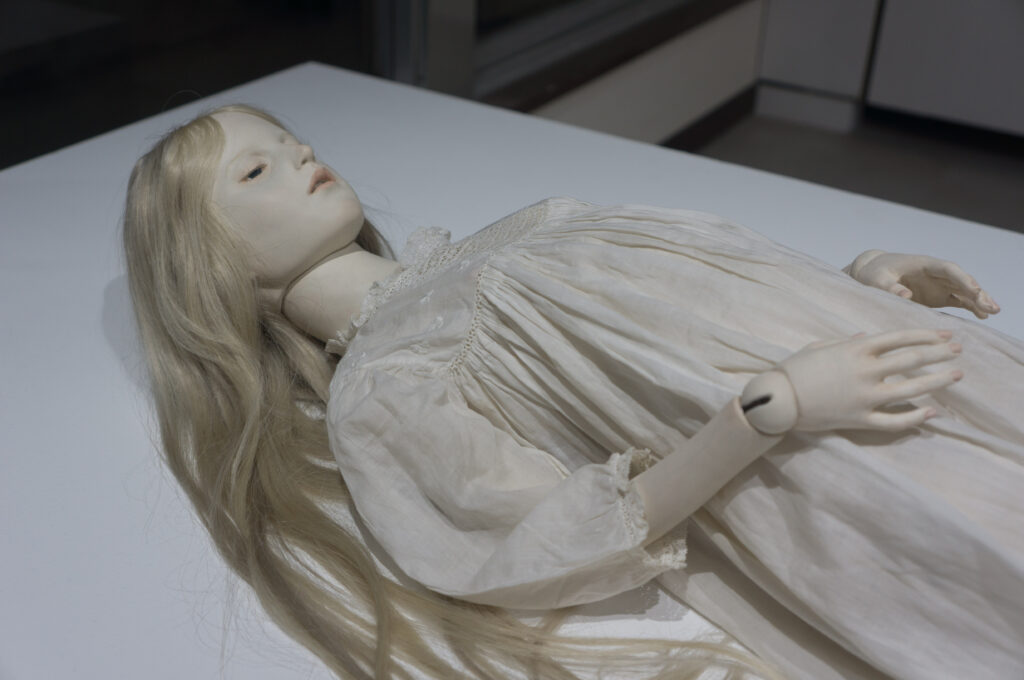
The piece “Tada Koko ni” (Just Here), which features fragments of broken dolls preserved in bottles, creates a powerful meditation on preservation, memory, and the persistence of presence even after destruction. This work demonstrates Sato’s ability to transform destruction into creation, fragmentation into wholeness, creating new forms of meaning from the remnants of previous forms.
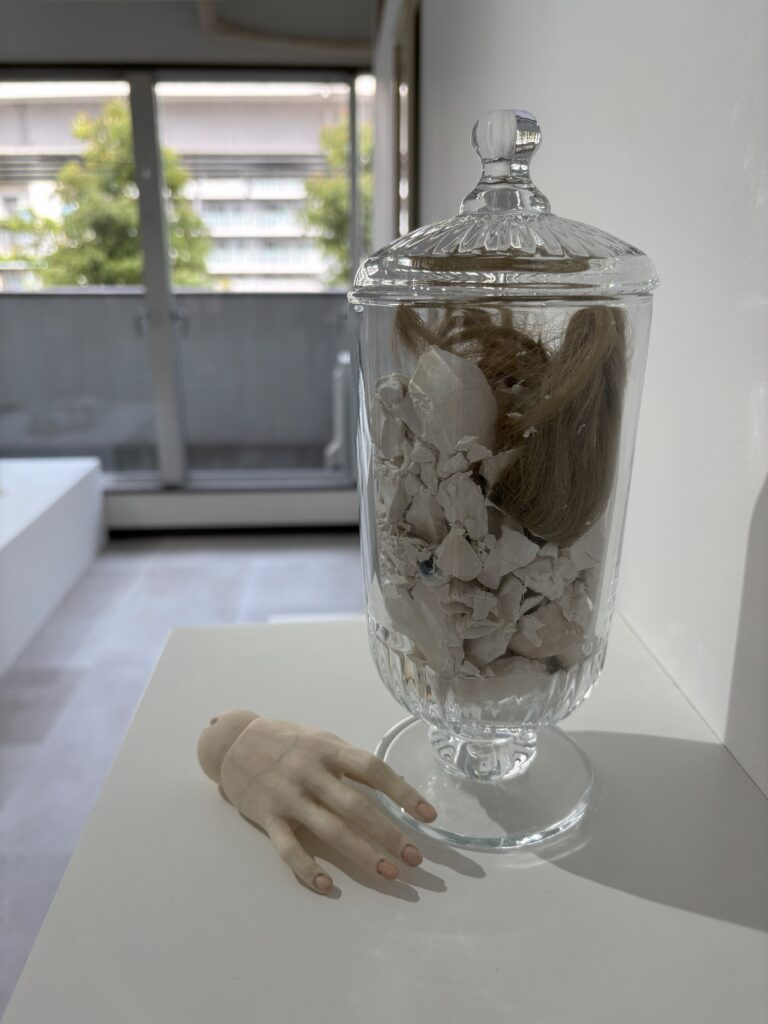
Innovation in Display and Presentation
Sato’s approach to the presentation of her work demonstrates sophisticated understanding of how sculptural objects create meaning through their relationship to space, light, and viewer movement. Her decision to present moveable figures in static positions creates a tension between potential and actuality that enhances the conceptual impact of the work. The sculptures possess the capability for movement but choose stillness, creating a meditation on agency, will, and the relationship between capacity and action.
The lighting and spatial arrangement of her exhibitions demonstrate awareness of how environmental factors contribute to the meaning of sculptural work. The interplay of light and shadow across the surfaces of her sculptures creates an ever-changing visual experience that mirrors the temporal nature of human existence. This attention to presentation demonstrates her understanding that sculpture is not merely object-making but environment-creating, space-transforming practice.
International Potential and Future Directions
As contemporary art becomes increasingly global, artists who can successfully translate local cultural forms into universally resonant artistic language become increasingly valuable. Sato’s work possesses this quality of cultural specificity combined with universal appeal. Her sculptures speak to fundamental human experiences while maintaining their distinctly Japanese aesthetic character.
The international art world’s growing interest in Japanese contemporary art, combined with broader cultural fascination with Japanese subcultural forms, positions Sato’s work perfectly for international recognition. Her ability to create serious artistic discourse around cultural forms often dismissed as superficial or commercial demonstrates the kind of cultural bridge-building that contemporary art institutions value.
Her work’s engagement with philosophical questions about embodiment, identity, and existence aligns with broader contemporary art concerns while bringing fresh perspectives informed by Japanese aesthetic traditions. This combination of philosophical sophistication and cultural specificity creates work that can function successfully in international art contexts while maintaining its essential character.
Technical Innovation and Future Developments
Sato’s innovations in doll-making techniques have implications beyond the art world, demonstrating how artistic investigation can push technical boundaries in ways that influence broader cultural production. Her development of surface treatments that create increasingly lifelike skin textures, her innovations in joint construction that allow for more naturalistic movement, and her advances in facial expression represent genuine technical contributions to the field.
The possibility of incorporating new technologies – digital modeling, 3D printing, advanced materials – into her practice opens up exciting possibilities for future development. However, her work’s essential power comes from the handmade quality, the evidence of human touch and decision-making that cannot be replicated by mechanical processes. The challenge for future development will be incorporating new possibilities while maintaining the essential humanity that makes her current work so compelling.
Critical Framework and Theoretical Implications
Sato’s work contributes to several important areas of contemporary art theory and criticism. Her exploration of the relationship between original and copy connects to discussions about authenticity and reproduction that have been central to art theory since Walter Benjamin’s “The Work of Art in the Age of Mechanical Reproduction.” By creating perfect copies of herself, she raises questions about which version is more “real” – the living artist or the sculpted representation.
Her work also contributes to feminist discourse about body representation, offering alternatives to both the objectifying male gaze and the idealizing tendencies of much body-positive art. Her sculptures present bodies that are neither idealized nor criticized but simply present, existing in their own right as complete entities worthy of contemplation and respect.
The phenomenological implications of her work connect to broader discussions about embodied experience and the relationship between mind and body that are central to contemporary philosophy and cognitive science. Her sculptures become tools for thinking about consciousness, presence, and the nature of subjective experience.
Conclusion: A Significant Voice in Contemporary Art
Sato Raimu’s work represents a significant contribution to contemporary art that deserves international recognition and serious critical attention. Her unique synthesis of technical excellence, conceptual sophistication, and cultural specificity creates sculptures that function successfully on multiple levels – as aesthetic objects, as philosophical investigations, and as cultural statements.
Her ability to transform what might be dismissed as subcultural craft into serious contemporary art demonstrates the kind of cultural translation that enriches the global art dialogue. Her work challenges hierarchical distinctions between high and low culture while maintaining the highest standards of artistic excellence.
As contemporary art continues to grapple with questions of identity, embodiment, and cultural difference, Sato’s work offers valuable perspectives informed by Japanese aesthetic traditions but speaking to universal human experiences. Her sculptures create spaces for contemplation, dialogue, and transformation that demonstrate art’s continued relevance to fundamental human concerns.
The recognition she has already received from established figures in the Japanese art world, combined with the critical success of her debut exhibition, suggests that international recognition is not only deserved but inevitable. Her work possesses the qualities – technical excellence, conceptual depth, cultural relevance, and emotional resonance – that distinguish significant contemporary art from merely fashionable production.
Sato Raimu represents the future of contemporary sculpture: culturally rooted but globally relevant, technically innovative but conceptually sophisticated, aesthetically compelling but intellectually challenging. Her work deserves the attention of serious collectors, curators, and critics who are interested in the most significant developments in contemporary art. As her practice continues to develop, it seems clear that she will occupy an increasingly important position in the international contemporary art dialogue, representing not only Japanese contemporary art but contemporary art’s highest aspirations and achievements.
This comprehensive analysis represents the current state of critical understanding of Sato Raimu’s artistic practice. As her work continues to develop and gain international recognition, further critical investigation will undoubtedly reveal additional layers of meaning and significance in her remarkable artistic achievement.
